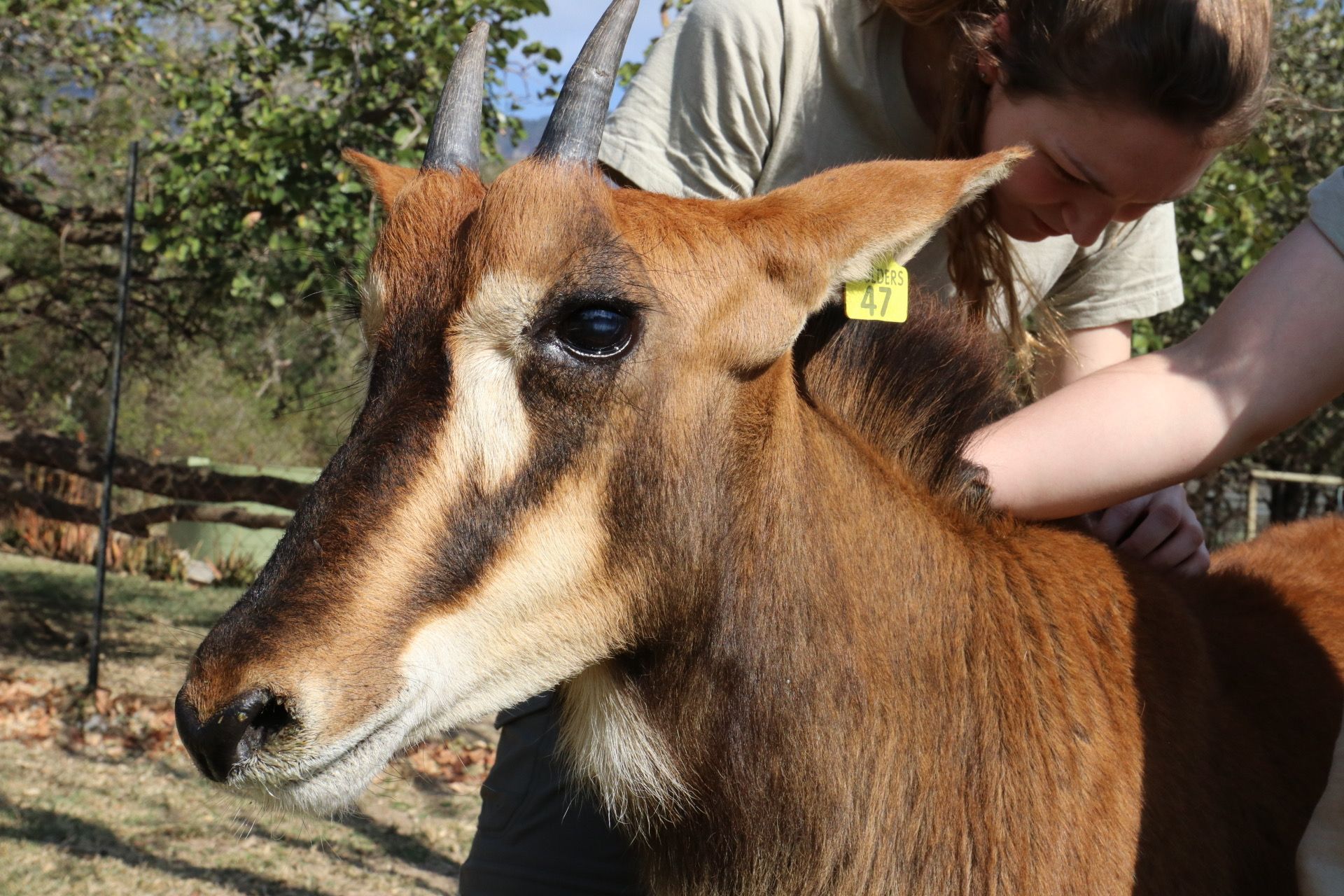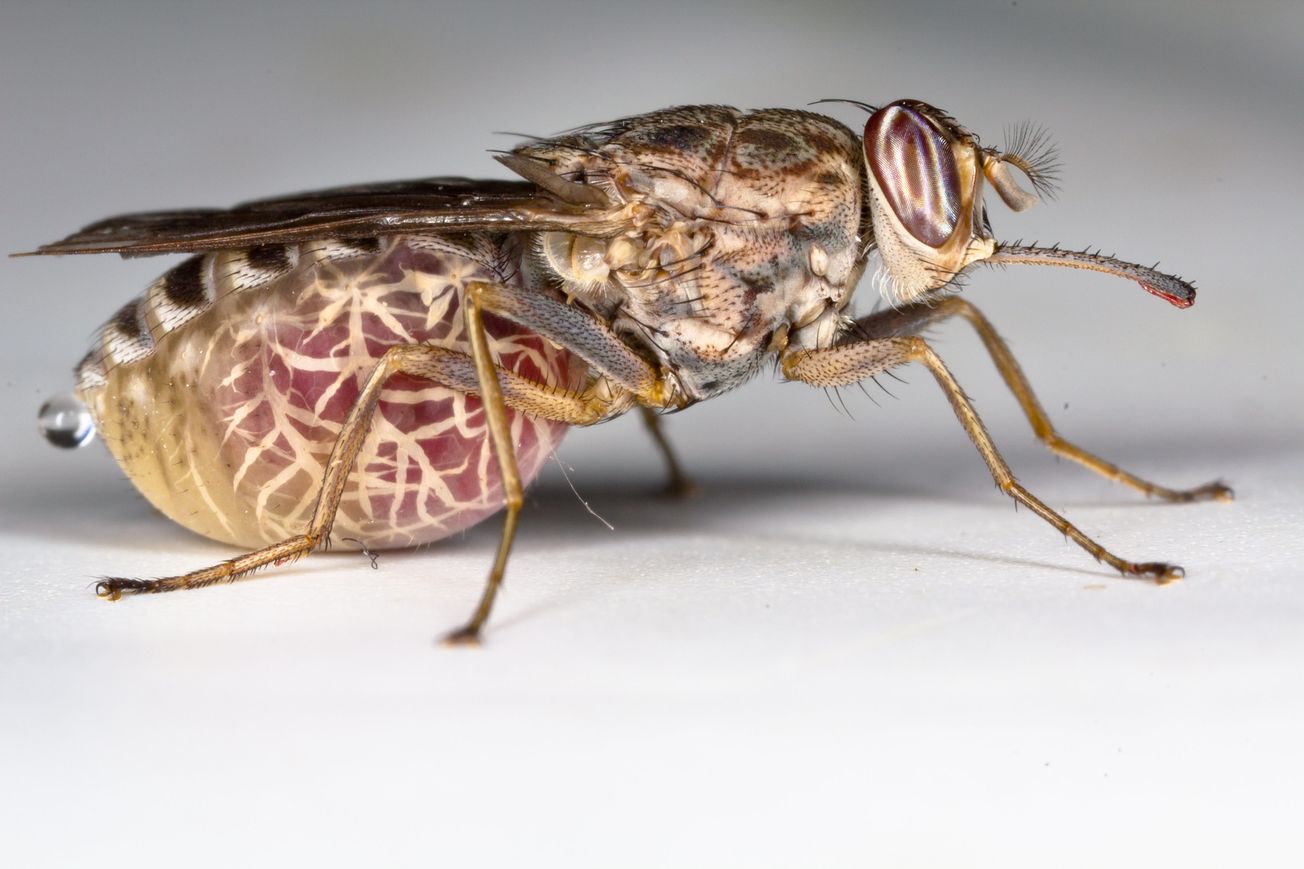By Alex Lawrence, Masters, Palaeobiology
The idea of a baby being born as big as it’s mother might sound like something out of science fiction; but where would science fiction be without science fact?
Dr Sinead English and Dr Antoine Barreaux from the University of Bristol’s Evolution and Vector Ecology (EVE) lab, along with researchers from the Liverpool School of Tropical Medicine and the Universities of Greenwich, Stellenbosch and California Riverside have examined the unique features of birth in tsetse flies and the implications for the control of these disease vectors.
Tsetse flies do not lay eggs like most others, instead giving birth to a single live larva, which immediately burrows underground to avoid predation. This one-baby-at-a-time approach to birth is rare in insects, as they usually favour high numbers of offspring to increase their chances of survival, a similar strategy seen in frogs and fish. So why did Tsetse flies evolve this system?
Tsetse flies live exclusively in sub-Saharan Africa, where they feed on the blood of larger animals. Known as ‘little lions on wings’ due to their voracious appetites, the flies consume up to twice their body weight every few days. This vampiric behaviour is key to the enormous size of their babies and the ability of the mothers to even carry them. The high protein levels in their blood allows them to feed their larva with a nourishing milk-like substance and provides them with protein and fat reserves to last them from birth until when they emerge from their burrow as a fully-grown adult.
The other key aspect of these gigantic babies is the soft, malleable nature of the larva, allowing it to be pushed out of the birth canal. Larger animals which feed on a similarly protein-rich diet, such as vampire bats, are not able to accomplish this feat due to constraints of their anatomical structures.
They are able withstand temperature fluctuations of 20°C in a short 24-hour period
Tsetse flies are tough. They are able withstand temperature fluctuations of 20 degrees celsius in a short 24-hour period. Additionally, their blood-based diet means they are not reliant on plants, which are easily affected by seasonal changes. Many insects have to go into a kind of hibernation when it is too dry, but not tsetse flies.
This toughness and ability to be active non-stop throughout the year are necessary to a population’s survival. A female tsetse can only give birth to between two and four offspring every month, far fewer than the average egg-laying fly. As a result, they have to live long enough to produce enough babies at this slow, one-by-one pace to keep population numbers steady.
Tsetse flies cause African trypanosomiasis, known as the potentially fatal sleeping sickness
Luckily, the females don’t need to involve the kind of tiring mate-attracting ceremonies that are a standard feature of nature documentaries. The first time a female tsetse mates, she is able to store enough sperm to become pregnant for the rest of her life.
Dr English, Dr Barreaux and their co-authors spoke about the importance of researching tsetse fly biology and evolution, in order to control their populations. Tsetse flies transfer the parasites to humans that cause African trypanosomiasis, known as the potentially fatal sleeping sickness. They can also transmit the disease to livestock and wildlife, which inflicts great economic damage on agriculture and tourism.

The slow pace of pregnancies in tsetse flies means that killing 4 percent of adult females in a population per day, would result in that population going extinct. This is a significantly lower percentage that needs to be killed than for egg-laying insects. Methods to reduce numbers of tsetse flies must target adults, as larvae immediately burrow underground, where they remain as pupae until they resurface as adults.
Due to the tsetse fly’s constant need to feed on blood, treating livestock with insecticides works well. Using artificial bait to resemble the animals on which they feed, as well as colorful, scented traps that play on the attraction of tsetse flies are simple and economically viable ways to reduce their numbers.
Artificial Intelligence could rescue livestock from pain and disease
University of Bristol study explores the truth behind zebra stripes
The method of releasing sterile males into a population, which has famously been used to control mosquitoes, is not as viable with tsetse flies. The long, single-offspring pregnancies mean it is time-consuming and expensive to create sterile males. Males also spread disease just as effectively as females (male mosquitoes do not feed on blood, and so do not spread disease), making it ethically questionable to breed and release them into the wild.
The researchers highlight the importance of learning about the tsetse fly’s bizarre biology and using this knowledge to further combat the spread of African trypanosomiasis.
Featured Image: Flickr / Geoffrey Attardo
What other fascinating reproduction strategies have you heard of? The animal kingdom is full of the weirdest stuff!







